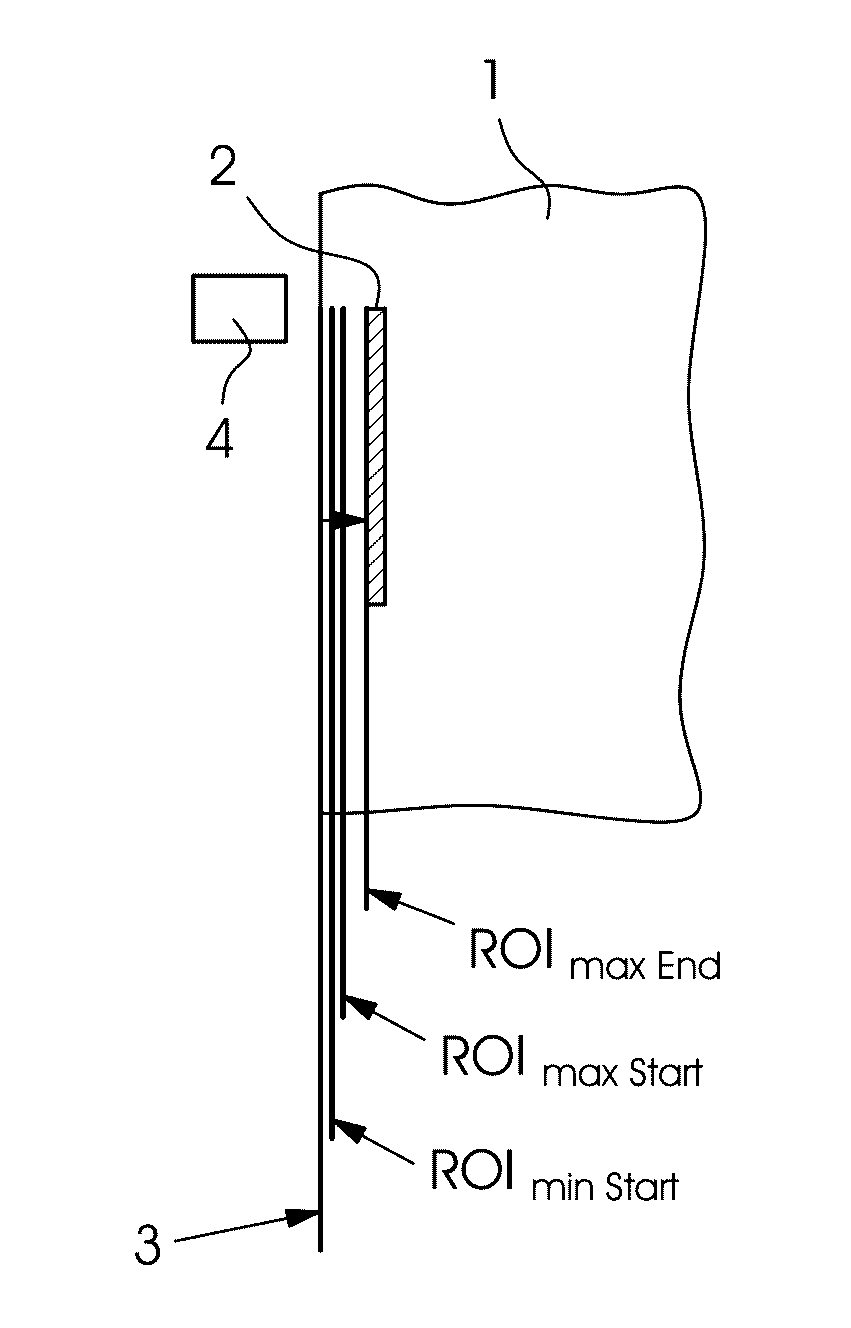Method for automated position detection by defining an evaluation region of a register sensor
a technology of register sensor and evaluation region, which is applied in the direction of pile separation, instruments, transportation and packaging, etc., can solve the problems of waste sheet production, and achieve the effect of avoiding adjustment errors
- Summary
- Abstract
- Description
- Claims
- Application Information
AI Technical Summary
Benefits of technology
Problems solved by technology
Method used
Image
Examples
Embodiment Construction
[0021]Referring now to the figures of the drawings in detail and first, particularly, to FIG. 1 thereof, there is seen a sheet-shaped printing substrate 1 onto which a register mark 2 has been printed. The register mark 2 has a specific width and is laterally bordered by two edges that are generally parallel to the edge of the sheet 1. A register sensor 4 is provided to detect the sheet edge 3 and the register mark 2. The register sensor 4 is connected to a control unit 5 of the machine for processing printing substrates. In accordance with the prior art, in order to define an evaluation region ROI, the evaluation region ROI is adjusted directly from a minimum ROI value ROImin to a maximum ROI value ROImax. However, a risk inherent in that process is that both edges of the register mark 2 may be located in the evaluation region ROI, causing two edges of the register mark 2 to be detected. If the wrong edge of the register mark 2 is taken as a reference for the alignment of the sheet...
PUM
 Login to View More
Login to View More Abstract
Description
Claims
Application Information
 Login to View More
Login to View More - R&D
- Intellectual Property
- Life Sciences
- Materials
- Tech Scout
- Unparalleled Data Quality
- Higher Quality Content
- 60% Fewer Hallucinations
Browse by: Latest US Patents, China's latest patents, Technical Efficacy Thesaurus, Application Domain, Technology Topic, Popular Technical Reports.
© 2025 PatSnap. All rights reserved.Legal|Privacy policy|Modern Slavery Act Transparency Statement|Sitemap|About US| Contact US: help@patsnap.com


